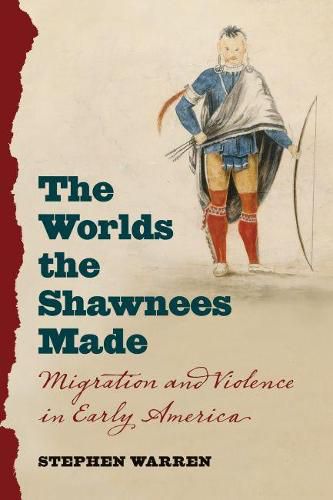Readings Newsletter
Become a Readings Member to make your shopping experience even easier.
Sign in or sign up for free!
You’re not far away from qualifying for FREE standard shipping within Australia
You’ve qualified for FREE standard shipping within Australia
The cart is loading…






In 1779, Shawnees from Chillicothe, a community in the Ohio country, told the British,
We have always been the frontier.
Their statement challenges an oft-held belief that American Indians derive their unique identities from longstanding ties to native lands. By tracking Shawnee people and migrations from 1400 to 1754, Stephen Warren illustrates how Shawnees made a life for themselves at the crossroads of empires and competing tribes, embracing mobility and often moving willingly toward violent borderlands. By the middle of the eighteenth century, the Shawnees ranged over the eastern half of North America and used their knowledge to foster notions of pan-Indian identity that shaped relations between Native Americans and settlers in the revolutionary era and beyond.
Warren’s deft analysis makes clear that Shawnees were not anomalous among Native peoples east of the Mississippi. Through migration, they and their neighbors adapted to disease, warfare, and dislocation by interacting with colonizers as slavers, mercenaries, guides, and traders. These adaptations enabled them to preserve their cultural identities and resist coalescence without forsaking their linguistic and religious traditions.
$9.00 standard shipping within Australia
FREE standard shipping within Australia for orders over $100.00
Express & International shipping calculated at checkout
In 1779, Shawnees from Chillicothe, a community in the Ohio country, told the British,
We have always been the frontier.
Their statement challenges an oft-held belief that American Indians derive their unique identities from longstanding ties to native lands. By tracking Shawnee people and migrations from 1400 to 1754, Stephen Warren illustrates how Shawnees made a life for themselves at the crossroads of empires and competing tribes, embracing mobility and often moving willingly toward violent borderlands. By the middle of the eighteenth century, the Shawnees ranged over the eastern half of North America and used their knowledge to foster notions of pan-Indian identity that shaped relations between Native Americans and settlers in the revolutionary era and beyond.
Warren’s deft analysis makes clear that Shawnees were not anomalous among Native peoples east of the Mississippi. Through migration, they and their neighbors adapted to disease, warfare, and dislocation by interacting with colonizers as slavers, mercenaries, guides, and traders. These adaptations enabled them to preserve their cultural identities and resist coalescence without forsaking their linguistic and religious traditions.